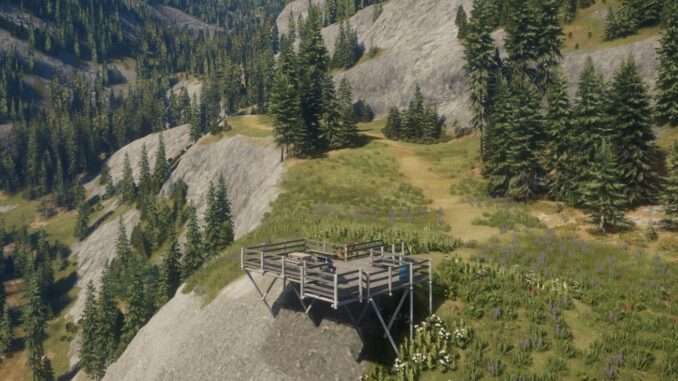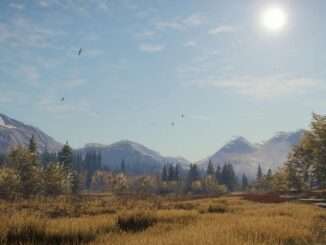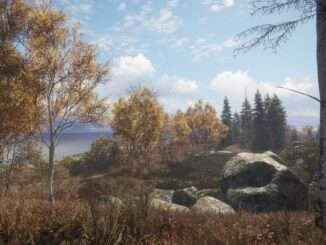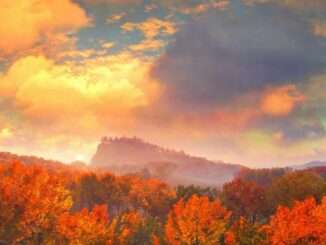
Scouting Dynamics
Note: Credit goes to Geronimo
Most hunters understand that knowing the area you are going to be hunting in will be a great advantage. This is just common sense.
And knowing where to go to find certain species and certain types of habitats follows that same logic.
It would be hopeless to just decide to go into a forest in northern Canada and try to hunt for elephant. That seems to be obvious, and unnecessary exaggeration, but you’d be surprised how many players are doing this, even if to a lesser degree.
For example, you might as well be hunting for elephants in Canada if you’re trying to hunt for moose deep in the hills at a time of the day when most moose are at a drinking area. Again it seems an obvious matter of sensible thinking, but how many players are regularly hunting for animals in places during the day when those animals just aren’t going to be found there?
So, knowing which species frequent certain areas, and their daily schedules dictating where they will be at any given time within that habitat, is advantageous to success.
Yes, it is possible to simply walk into an area and shoot whatever you might happen to encounter. Many players hunt like this. But this OP is to suggest a few pointers for those who would like to be a bit more prepared, and benefit more from knowing more, rather than just hoping for chance encounters.
Chance hunting inevitably leads to lengthy hunts where few of your favorite animals are found, and complaints about walking forever through landscapes void of life.
Now, one of the more important requirements for scouting an area for the purpose of becoming familiar with what it contains within it, is the ‘Approach Factor’.
How a hunter enters into an area, right from the start, sets the stage for the normality of that which he will observe. In other words, you want to try to ensure that what you’re seeing is what is normally happening every day on a regular basis. By doing this you can increase your odds of revisiting the same experience again the next time you go there.
If your Approach is more of an unwelcomed Encroachment where everything that you’re observing has been affected by your presence, than that regularity and normalcy you hoped to see will not be present. And therefore you cannot count on revisiting the same experience upon your later return.
So, when you have a specific area that you want to engage undisturbed, get off the ATV at least 600 yards before arriving at it’s perimeter, and stop running at least 400 yards before.
Logic tells us that if we get off of our ATV at 600 yards, most nearby animals are already spooked, so we can continue to run the extra 200 yards anyway, which puts us at that 400 yard point.
Now understand that this is still risking spooking animals that might have been travelling into that area, and which could be thwarted from their regular pathway as a result, disrupting your hopes for entering into undisturbed territory.
But to be realistic, you’re always going to spook something as you enter into an area anyway, so it’s really just a matter of how much you want to lower your chances of achieving your goal of entering with stealth and observing an undisturbed habitat.
Once you’re actually within the specific area you hope to scout, there are a few things to keep in mind that many players may not think of at all. You should always be asking yourself questions about what you’re hoping to find, what might be going on around you, and what you should do to help you achieve your goal.
Wandering aimlessly can sometimes get you a kill here and there, but it’s not scouting, and won’t help in achieving specific goals.
For example, given that you can never know when you might be in or near an activity zone/ Need Zone, and that you hope to observe animals that will be using the same area again in following days, than you should avoid doing anything that will cause those animals to act differently.
And many players don’t think about this when they whip out their lures in hopes of bringing animals out of hiding. That’s not how you’re supposed to use lures. And doing this actually works against you.
When you use a lure on animals, and it works, you actually place them in an ‘Allured State’. And for as long as that allurement remains active, the animals will not be going about their normal routines. And normalcy is your goal.
When you use a lure, be it a caller or a scent spray, you are distracting the animals off of their regular pathways, potentially leading them to use a zone they wouldn’t normally have used, and are bringing them to your position, which is not what you want to do, especially if it happens to be animals that will attack you once they realize you’re there. And you also risk them spooking once they discover you.
Your goal is to observe their natural routine as though you are not even there. So why would you want to chance revealing yourself by luring them to you?
Again this seems obvious, but how many players use their lures to try to get animals out where they can see them?
When animals are ‘allured’ they also won’t be going to, or using their scheduled activity areas. So you won’t get the chance to find out where they go naturally each day, and worse, they might even just be standing nearby your position, trying to use their senses to decide what to do next, and often just end up gathered nearby but out of sight.
So by ‘alluring’ then in the hopes of getting them out in the open, or to get them to a zone, you’re actually doing the opposite with every call you make, and every scent you spray. You could actually spend the entire period of a zone schedule keeping the animals from doing what they would be normally by thinking you’re ‘luring’ them when you’re really just ‘alluring’ them, to your disadvantage.
It’s simple thought processing like this while you’re scouting that elevates you from novice to veteran.
The above reasoning also suggests we shouldn’t be putting up tents or stands, until we’re ready to finish our scouting and establish a fast travel connection.
The thing with Need Zones, is he generalized definition most people have for them as simply being in map designations of animal activity scheduling, as though there can’t possibly be any other dynamics involved.
So not being that naive, lol, when I’m scouting areas I’m always careful about doing things unnecessarily without considering what I might be causing, and IF spawning and species connection is an actual dynamic, as I seem to experience, than why risk things when you don’t have to.
For example, why click on tracks that you can identify with your own vision, when there’s a risk you might cause unwanted species to start showing up where you don’t want them.
And if you don’t click on absolutely everything that glows or moves, lol, than you don’t create issues out of habit.
When I see those veggie tracks, I don’t click on them to see what made them, without first using my own eyes to look for tracks leading to those chewed grass clumps, or drinking signs, to see what species are there. And if I see one that is a favored species, I will follow that track to a clump of weeds that is the same color as that active track.
Often in activity zones, you’ll find more tracks of more than one species, and usually when there’s alot of veggie sign it’s often rabbits, pigs, wolves, etc and you might see one set of moose tracks going through there, but if you just click on the veggie sign, you end up tagging a rabbit zone, or worse, a wolf zone.
Makes life in those woods alot easier if you don’t have Need Zones filled with animals that you’re not even wanting to hunt in those areas, right?
But most people train their brains right from the start to click on everything, and as a result do it habitually even when it might be unnecessarily risky.
At some point, after entering an area, scouting is finished, and you’re still not seeing any animals, you may want to try luring whichever species you hope to hunt.
Keep in mind the time of day, the daily schedule of your chosen species, and the landscape around you.
When luring in places with aggressive animals you should be in a stand to avoid being attacked. Not much sense luring in a bull moose just to get killed by the cows that usually come in ahead of it.
If you don’t have to worry about aggression than just try to make sure you have quick access to cover that will make you invisible. Now just going prone will accomplish that, but remember to avoid using the fast speed when crawling because it can change from invisible to exposed in a heartbeat, and you can also make noise. And it often only takes seconds of being visible or noisy to spook your quarry.
You also have to consider that you can be trampled on the ground regardless of species or aggression. So whenever you decide to lure, keep in mind that bringing the animals to you should involve your knowing all the further dynamics of timing, safety, landscape/terrain, cover/visibility-noise, pathways, etc.
Sometimes, luring while walking through a piece of habitat can both, incite animals to reply this giving away their positions, as well as attract them toward you.
But as already pointed out, you need to be aware of the consequences of having your quarry approach you, as opposed to you approaching them.
As long as you’re managing stealth as you approach an area you have an advantage of catching them unaware. But that means you must find them, and without alerting them before you get into opportune position.
However, once you use a lure you have just given up that advantage, and now have those unsuspecting animals looking for you.
So, using lures has advantages and disadvantages, and knowing these and how to adapt accordingly is crucial.
Just walking along blasting away on a call and expecting all the various involved dynamics to simply align in your favor, is foolhardy, and far more often causing you to lose more opportunities than you find.
When scouting, or hunting, you always need to be asking yourself the pertinent questions. What if this should happen. What will the animals do if I do this or that? Am I prepared if ‘this’ should happen? What is the routine schedule of the species I’m after and are there any Activity Areas nearby, or habitat that looks appropriate?
Thinking ahead like this will teach us as we engage and experience each hunt. If we’re just mindlessly waltzing along hoping for encounters and thinking only about the beer and stew back at the camp, than were not developing any learned skills or helpful knowledge, and probably making many mistakes we aren’t even aware we’ve made, this never learning from them and continuing to make them with every trip.
If you’re not speculating while you’re hunting, and not questioning your every step and decision, than you’re not really hunting. You’re just strolling and hoping for opportunities. There’s nothing wrong with that, IF you’re not really interested in developing your hunting skills, or being able to harvest specific targets, and more of them, with more precision and success, in an environment that you’ve prepared yourself for. If developing these actual skills don’t matter to you, than you won’t need to worry about being tactical.





I think there quite a bit of truth to grinding methods. It’s not pure RNG as many people insist. Some that insist are describing a simple, but seemingly random formula. I have no doubt it works as many explain. I just don’t like pure grinding in any game.
They say kill an animal and it will respawn 1 lvl higher or 1 level lower. That’s not random by nature. I also think it isn’t one or the other, there is plenty of evidence that it is one up, or down, or stays the same with slightly different stats. Even less random if you think about it.
The game loop would have died long ago if it was purely RNG.
As to devs adding ‘mystery’, that’s just not a thing you can reliable do with programming, aside from pure RNG.
That is actually what I was trying to get about running amok and seeing what happens. Added bonus is you can treat each map differently, therefore achieve a different feel and perhaps ‘mystery’ to how it all plays out. Make the mystery by ‘breaking’ the map. Overall it is the players choices that do shape the feel of the map from one to another.
I am treating Rancho as an experiment in studied chaos. Other maps I might take your approach and not touch anything. I doubt I will go as far as you, because it is obvious to me it has little bearing as to where the animals are in general.
Try this, go run around in Cauce Muarto on Rancho, above the east west road. You will probably not find a single Jackrabbit, it is probably that way on everyones map because these things are baked into the maps. I will eventually try to see how much you can get animals to not only change zones, but perhaps create new ones. I think it may be possible, but I also think the game has hardcoded areas that separate the species, but not so much that everyones map is exactly identical.
Back to hunting jackrabbits, each group seems to have a range, maybe 1km in diameter at most. I am thinking this is how all animals work, though bigger animals have bigger natural ranges. Probably no more than 2km, but you could easily force an animal out of it’s range at a zone ‘shift change’ and it should stay in the new range using whatever applicable need zones.
I don’t think need zones control or spawn more animals, they are obviously already there. But unlocking them changes the feel and fullness of feeling a map has, if that makes any sense.
Gonna go herd some piggies on Te Awaroa now.
Have fun out there kids…
Good post!
I tend to not go out of my way to find need zones but instead look for places in the area where I have good visibility (usually because of height or vegetation). I’ll string together a route with a number of these and sequentially travel that path, staying in cover where ever I can, stopping at each spot and spending some time scanning with the binoculars.
I’ll walk that route at different times of the day.
While it may not be the most exciting way of hunting I aim to build up a rough mental map of animals moving too and from throughout the area. Once I’ve got enough of a picture I’ll plan on targeting a specific location that’s on an animal pathway and aim to ambush my prey with the bow.
Overall this is a pretty long winded way of downing an animal but it’s what I’d do in real life, more or less, and to me, part of the fun, is putting together the jigsaw puzzle of animal activity within the region I’ve chosen to hunt.
I’ll even go to the extent of making hand drawn maps of the terrain and the activity. I keep these and often flip through them for enjoyment and memories.
You (well I do) feel like you’ve earned your animal once you’ve taken it.